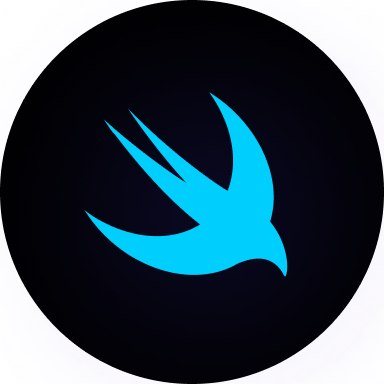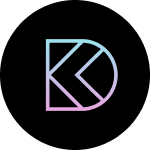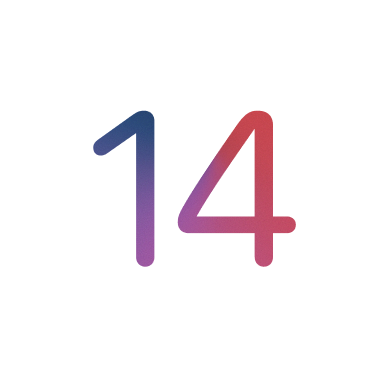Tabs and Customizations
Add to favorites
Create a highly customized tabbed navigation with using Components
Play video
Build a full site in Webflow
1
Build a full site in Webflow
7:45
2
Getting Started with Webflow
28:15
3
Flex, Grid and Adaptive Layout
18:46
4
Components, Nav Bar & Lightbox
15:41
5
Tabs and Customizations
19:55
6
Transitions and States
17:21
7
Animations and Interactions
20:09
8
Scroll Parallax
11:41
9
Start Animation
9:08
10
Lottie Animations
16:35
11
Design with Data and CMS
12:17
12
Symbols, Links and Pages
14:16
13
Forms and Submit Data
13:30
14
Ecommerce and Custom Code
13:28
About this Course
In this free Webflow course, I'm teaching you how to implement and deploy a real site for Angle from scratch without a single line of code. It's going to be a fully functional site with multiple pages, advanced interactions, dynamic data, payments and animated assets from Shape.
Projects

- Final Site
- Getting Started with Webflow
- Flex, Grid and Adaptive Layout
- Components and Nav Bar
- Tabs and Advanced Layout
- Transitions and States
- Animations and Interactions
- Scroll Parallax
- Start Animation
- Lottie Animations
- Design with Data and CMS
- Symbols, Links and Pages
- Forms and Submit Data
- Ecommerce and Custom Code
Tabs Component
Start off by selecting Hero, press A and insert the Tabs component from under Components. Place it right after Container. Select the first Tab Pane, add the Image element to it and choose Device-iPhone11Pro.png.
Tab Container
We'll need to add a container that is positioned differently in a different 3D plane but it's impossible to add any other element in the Tabs component. We're also unable to change the structure of our tabs. So, we'll be adding another container that will have both the Tabs component and a Div Block. To do so, create a Div Block and add another Div Block in it. Add Tabs in it as well and rename the parent Div Block to Tabs Container.
Align Tabs Container
Now, select the Tabs Container and give it a Position of Absolute. Resize this container to a width of 540 and a height of 600. In Position, set the value of Top to 208. To center an element that has Absolute positioning, give the left a value of 50%. We'll also add a margin to it to center it fully. Usually, we calculate the margin by taking the width of the container and dividing it by 2 i.e. 540/2 which is -270. But in this case we'd like to have some offset so set the margin to -160.
Tabs Menu
Since, we want the Tabs Menu to float, give it a positioning of Absolute. Set the top position to 400 and left position to 80. We're gonna give it a **z-index of 5. Set the **Display to Flex and the Direction to Vertical. Now, select the first Tab Link and set the font-size to 16.
Current Class
You'll notice that a green tile named Current has been added to the Selector field. Current means selected, this refers to the part that is currently selected. It is slightly darker than the items that aren't selected. You might also notice that the properties are Orange which means they're inherited. So, whatever you apply right now will not be added to the first class but to the second class i.e. Current. Test it by renaming all the Tab Link classes to Tab Link.
Styling Tab Links
To avoid applying the styles only to the Current class, select the 2nd Tab Link and give it a height of 44. This ensures that the styles get applied to all the Links. Set color to black, background-color to transparent and border-radius to 20. Add an outline by choosing the 2nd option for Style in Border and set border-width to 2. As we only want to have border-color for selected item, set the border-color to Transparent by default.
Tab Link Background
In this step, we'll add a background to the Tab Links. Select the 2nd Tab Link and add Icon-Phone.svg as its background image. Set the image's width to Auto and Position to left-middle. Choose the 'X' option in Tile and set the left position to 30px. Now, for the 2nd Tab Link, replace the default top and bottom padding with 0. Set its width to 220 and Align it to the Center.
Selected State
To edit how the Tab Link looks when it's selected, click on the 1st Tab Link. Set the border-color to #4E5AC2, font-size to 20 and font-weight to bold. We only want to show the phone icon when the item is selected. So, go to the 2nd Tab Link and set Top position to -100%. Now, go back to the 1st Tab Link and set the Top position for the image there to 50%. Rename the Tab Links to iPhone11 Pro, iPhone 11 and Galaxy S10. Lastly, add a 4th Tab Link by duplicating the 3rd one and name it Pixel 3.
*Note: An issue might occur when you set the background to transparent. To resolve this, set the background to white first and then to transparent.
Blue Box
In this step, we'll style the Div Block that will serve as the floating Blue Box. Select the Div Block in the Tabs Container and set its width to 140 and height to 240. Give it a Position of Absolute. Set the top position to 380 and left position to 135.
Styling Blue Box
Give it a background-color of #0091FF and a border-radius of 40. Add a box shadow, set the Angle to 180, Distance to 30, Blur to 30, color to #0091FF and A in color to 25%. Rename the Div Block to Tabs Menu Container, place it above Tabs and give it a z-index of 4. To center the Tab Links, select the 2nd Tab Link and give it a padding-right of 0. Set the font-color to white. Lastly, we'll add images to all the links we've. Go to Tabs Content and add the respective images for every Tab Pane, just like we did for the first one.
Conclusion
We hope you're having fun learning Webflow with us. In this section, we learned about tabs, class priorities, z-index, selection and the current style as well as drop shadow. In the next one, we'll learn about transitions and state so we can add some animations. See you then!
Steps
Component Tabs
Select Hero
Create Tabs
Tab Panes
Insert image Device-iPhonePro.png
Tabs Container
Name "Tabs Container"
Position Absolute
Reorder Layer to first
W540, H600
Top 208, Left 50%, Margin Left -160
Tabs Menu
Width 220px
Flex Vertical
Position Absolute
Top 400, Left 80
z-index 5
Tab Link
Select second Tab Link
Font 16px, height 44px, black, align center
Padding left 30px, Right 0, Top 0, Bottom 0
Background transparent, Icon-Phone.svg, Width Auto, Left 30px, Top -100%, Don't tile
Border Radius 20px, Solid, Width 2px, transparent
iPhone 11, iPhone 11 Pro, Galaxy S10, Pixel 3
Images
Current
Font 20px, Bold
Border Color #4e5ac2
Background image Top 50%
Tabs Menu Container
140 x 240px
Position Absolute
Top 380, Left 135
Background #0091ff
Radius 40px
Z-index 4
Outer shadow: 180deg, 30px, 30px, #0091ff, 25%
Tab Link font white
Templates and source code
Download source files
Download the videos and assets to refer and learn offline without interuption.
Design template
Source code for all sections
Video files, ePub and subtitles
Assets
Videos
ePub
Subtitles
1
Build a full site in Webflow
Design and animate a high converting landing page with advanced interactions, payments and CMS
7:45
2
Getting Started with Webflow
Building your first app without code with Webflow
28:15
3
Flex, Grid and Adaptive Layout
Working with adaptive CSS layout techniques without code
18:46
4
Components, Nav Bar & Lightbox
Use pre-built controls like Nav Bar, Tabs, Slider and Lightbox
15:41
5
Tabs and Customizations
Create a highly customized tabbed navigation with using Components
19:55
6
Transitions and States
Learn how to use hover interactions and states in Webflow
17:21
7
Animations and Interactions
Create an interactive 3D effect using the Webflow Interactions
20:09
8
Scroll Parallax
Move elements during scroll and when elements are in view
11:41
9
Start Animation
Create a beautiful on-load animation using opacity and move
9:08
10
Lottie Animations
Create advanced interactions using animated assets
16:35
11
Design with Data and CMS
Loop through data from the content management system in Webflow
12:17
12
Symbols, Links and Pages
Create powerful reusable elements across multiple pages
14:16
13
Forms and Submit Data
Create a newsletter and login form that submits data
13:30
14
Ecommerce and Custom Code
Build a purchase experience and embed code in Webflow
13:28
Meet the instructor
We all try to be consistent with our way of teaching step-by-step, providing source files and prioritizing design in our courses.
Meng To
I design, code and write
Meng To is the author of Design+Code. Meng started off his career as a self-taught designer from Montreal and eventually traveled around the world for 2 years as his US VISA was denied. During his travels, he wrote a book which now has 35,000 readers.
40 courses - 193 hours

Master AI Prompting for Stunning UI
Learn how to leverage AI tools like Aura for creating beautiful designs, working with templates, and experimenting with advanced prompts. A concise guide for designers and developers to level up their skills.
9 hrs

Build SwiftUI apps for iOS 18 with Cursor and Xcode
In this course, we'll explore the exciting new features of SwiftUI 6 and Xcode 16 for building iOS 18 apps. From mesh gradients and text animations to ripple effects, you'll learn how to create polished, highly custom apps using the latest workflows. We'll also dive into using Cursor and Claude AI for AI-driven coding, helping you start strong and customize your apps.
5 hrs

Create your Dream Apps with Cursor and Claude AI
Learn to build your dream web apps from the ground up using Cursor, Claude AI, and a suite of powerful AI tools. This course covers everything you need, including React for frontend development, Firebase for backend integration, and Stripe for handling payments. You’ll also dive into advanced AI tools like Claude Artifacts, Galileo AI, v0.dev for UI, Ideogram for design generation, and Cursor Composer for full-scale development.
6 hrs

Build a React Site from Figma to Codux
In this course, you'll learn to build a website from scratch using Codux, starting with a Figma template. You’ll master responsive design, collaborate with developers on a real React project, export CSS from Figma using Locofy, set up breakpoints with media queries, add CSS animations, improve SEO, create multiple pages with React Router, and publish your site. By following best practices, you’ll bridge design and development, improve your web design skills.
2 hrs

Create 3D UI for iOS and visionOS in Spline
Comprehensive 3D Design Course: From Basics to Advanced Techniques for iOS and visionOS using SwiftUI
3 hrs

Master No-Code Web Design with Framer
In this free Framer course, you'll learn to create modern, user-friendly interfaces. Start with dark mode and glass designs, then move from Figma to Framer, using vectors and auto layout for responsive websites. Add animations, interactive buttons, and custom components with code. Finally, you'll craft a design system suitable for teamwork or solo projects, all in a straightforward and practical approach.
4 hrs

Build SwiftUI Apps for iOS 17
In this course, we’ll be exploring the fresh and exciting features of SwiftUI 5! As we craft a variety of iOS apps from the ground up, we'll delve deep into the treasure trove that is SwiftUI's user interface, interactions, and animations.
4 hrs

Build Beautiful Apps with GPT-4 and Midjourney
Design and develop apps using GPT-4 and Midjourney with prompts for SwiftUI, React, CSS, app concepts, icons, and copywriting
4 hrs

Build SwiftUI apps for iOS 16
Create animated and interactive apps using new iOS 16 techniques using SwiftUI 4 and Xcode 14
5 hrs

Build a 3D Site Without Code with Framer
Design and publish a responsive site with 3D animation without writing a single line of code
3 hrs

Create 3D Site with Spline and React
Design and code a landing page with an interactive 3D asset using Spline and CodeSandbox
1 hrs

Build an Animated App with Rive and SwiftUI
Design and code an iOS app with Rive animated assets, icon animations, custom layouts and interactions
3 hrs

Build a SwiftUI app for iOS 15 Part 3
Design and code a SwiftUI 3 app with custom layouts, animations and gestures using Xcode 13, SF Symbols 3, Canvas, Concurrency, Searchable and a whole lot more
4 hrs

Build a SwiftUI app for iOS 15 Part 2
Design and code a SwiftUI 3 app with custom layouts, animations and gestures using Xcode 13, SF Symbols 3, Canvas, Concurrency, Searchable and a whole lot more
3 hrs

Build a SwiftUI app for iOS 15
Design and code a SwiftUI 3 app with custom layouts, animations and gestures using Xcode 13, SF Symbols 3, Canvas, Concurrency, Searchable and a whole lot more
4 hrs

React Livestreams
Learn how we can use React Hooks to build web apps using libraries, tools, apis and frameworks
4 hrs

Design Founder Livestreams
A journey on how we built DesignCode covering product design, management, analytics, revenue and a good dose of learning from our successes and failures
2 hrs

SwiftUI Advanced Handbook
An extensive series of tutorials covering advanced topics related to SwiftUI, with a main focus on backend and logic to take your SwiftUI skills to the next level
4 hrs

iOS Design Handbook
A complete guide to designing for iOS 14 with videos, examples and design files
2 hrs

SwiftUI Handbook
A comprehensive series of tutorials covering Xcode, SwiftUI and all the layout and development techniques
7 hrs

Build a web app with React Hooks
Learn how we built the new Design+Code site with React Hooks using Gatsby, Netlify, and advanced CSS techniques with Styled Components.
4 hrs

UI Design Handbook
A comprehensive guide to the best tips and tricks for UI design. Free tutorials for learning user interface design.
2 hrs

Figma Handbook
A comprehensive guide to the best tips and tricks in Figma. Not affiliated with or endorsed by Figma, Inc.
6 hrs

SwiftUI for iOS 14
Build a multi-platform app from scratch using the new techniques in iOS 14. We'll use the Sidebar and Lazy Grids to make the layout adaptive for iOS, iPadOS, macOS Big Sur and we'll learn the new Matched Geometry Effect to create beautiful transitions between screens without the complexity. This course is beginner-friendly and is taught step-by-step in a video format.
3 hrs

SwiftUI Livestreams
This is a compilation of the SwiftUI live streams hosted by Meng. Over there he talks and teaches how to use design systems, typography, navigation, iOS 14 Design, prototyping, animation and Developer Handoff.
19 hrs

UI Design Livestreams
This is a compilation of the UI live streams hosted by Meng. Over there he talks and teaches how to use design systems, typography, navigation, iOS 14 Design, prototyping, animation and Developer Handoff.
26 hrs

UI Design for Developers
In this course we'll learn how to use design systems, set up break points, typography, spacing, navigation, size rules for adapting to the iPad, mobile and web versions, and different techniques that translate well from design to code.
3 hrs

Build an app with SwiftUI Part 3
This course was written for designers and developers who are passionate about design and about building real apps for iOS, iPadOS, macOS, tvOS and watchOS. SwiftUI works across all of those platforms. While the code is not a one-size-fits-all, the controls and techniques involved can apply to all platforms. It is beginner-friendly, but it is also packed with design tricks and cool workflows about building the best UIs and interactions.
4 hrs

Build an app with SwiftUI Part 2
This course was written for designers and developers who are passionate about design and about building real apps for iOS, iPadOS, macOS, tvOS and watchOS. SwiftUI works across all of those platforms. While the code is not a one-size-fits-all, the controls and techniques involved can apply to all platforms. It is beginner-friendly, but it is also packed with design tricks and cool workflows about building the best UIs and interactions.
4 hrs

Build a full site in Webflow
Webflow is a design tool that can build production-ready experiences without code. You can implement CSS-driven adaptive layouts, build complex interactions and deploy all in one tool. Webflow also comes with a built-in content management system (CMS) and Ecommerce for creating a purchase experience without the need of third-party tools.
3 hrs

Advanced Prototyping in ProtoPie
ProtoPie is a cross-platform prototyping tool that creates prototypes nearly as powerful as those made with code, with half of the efforts, and zero code. It's perfect for designers who want to quickly experiment with advanced interactions using variables, conditions, sensors and more.
3 hrs

Build an app with SwiftUI Part 1
This course was written for designers and developers who are passionate about design and about building real apps for iOS, iPadOS, macOS, tvOS and watchOS. SwiftUI works across all of those platforms. While the code is not a one-size-fits-all, the controls and techniques involved can apply to all platforms. It is beginner-friendly, but it is also packed with design tricks and cool workflows about building the best UIs and interactions.
4 hrs

React Native for Designers Part 2
React Native is a popular Javascript framework that builds on top of React by using native components to create a real mobile app indistinguishable from one made using Xcode or Android Studio. The main difference with native development is that you get to use CSS, hot-reload, Javascript and other familiar techniques that the Web has grown over the past decades. Most importantly, you're building for both iOS and Android using the same codebase.
3 hrs

React Native for Designers
React Native is a popular Javascript framework that builds on top of React by using native components to create a real mobile app indistinguishable from one made using Xcode or Android Studio. The main difference with native development is that you get to use CSS, hot-reload, Javascript and other familiar techniques that the Web has grown over the past decades. Most importantly, you're building for both iOS and Android using the same codebase.
5 hrs

Design System in Figma
Learn how to use and design a collaborative and powerful design system in Figma. Design Systems provide a shared library of reusable components and guidelines and that will let you build products much faster
3 hrs

React for Designers
Learn how to build a modern site using React and the most efficient libraries to get your site/product online. Get familiar with Grid CSS, animations, interactions, dynamic data with Contentful and deploying your site with Netlify.
3 hrs

Swift Advanced
Learn Swift a robust and intuitive programming language created by Apple for building apps for iOS, Mac, Apple TV and Apple Watch
9 hrs

Learn Swift
Learn Swift a robust and intuitive programming language created by Apple for building apps for iOS, Mac, Apple TV and Apple Watch
4 hrs

Learn Sketch
Learn Sketch a design tool entirely vector-based and focused on user interface design
5 hrs

Learn iOS 11 Design
Learn colors, typography and layout for iOS 8
1 hrs
